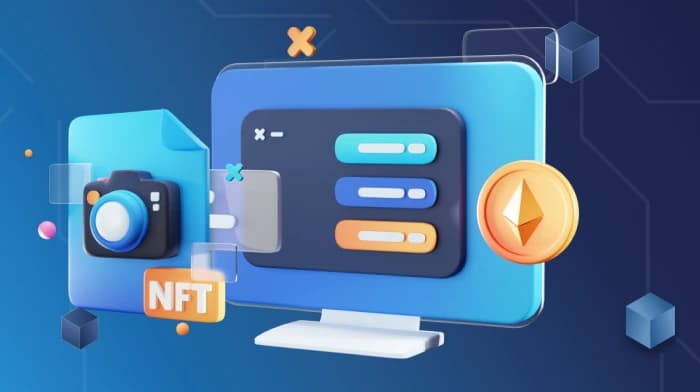Project Overview
The gaming sector has seen a change towards asset control and player driven economies recently. Conventional gaming platforms function independently where in-game items are confined to games only. This setup creates scarcity artificially and restricts the value of player investments.
At the time though blockchain gaming has surfaced pledging asset possession but faces challenges like user experience issues and limited scalability, alongside disconnected environments.
The coming together of these realms demands advanced technical infrastructure capable of meeting the real-time gaming needs while upholding blockchain transaction integrity seamlessly expected by players, with swift response times and providing developers with tools for incorporating assets without having to reconstruct their entire game framework from scratch poses a challenge that goes beyond just technical execution to encompass regulatory adherence and fraud mitigation alongside the establishment of sustainable economic frameworks.
Problem Analysis
Fragmentation Issues
The gaming world experienced an issue with fragmentation as blockchain assets were disconnected from the gaming systems users are familiar with. Players encountered challenges when trying to move assets between games to issues like wallet setups and delays in transaction confirmations that disrupted the gaming experience flow.
Developer Integration Challenges
Developers faced challenges with integrating systems. They needed specific expertise in blockchain technology to incorporate fundamental asset features effectively. Smart contract development required specialized skills that many game development teams lacked. The absence of APIs and tools for development compelled teams to devise fixes resulting in:
- Longer development periods
- Varying user interactions within the platform network ecosystem
Scalability Limitations
Scalability challenges have become a hurdle as blockchain systems struggle to handle the high transaction volumes and quick response times needed for contemporary gaming demands. During peak gaming periods when numerous micro-transactions are initiated every second, decentralized ledgers reach their limit in processing capabilities while upholding the security and transparency features that blockchain technology aims to provide.
Security Concerns
The rise in security threats posed dangers since gaming platforms started to appeal to hackers looking to exploit user profiles and digital currency wallets alike due to their dual nature of on-chain ownership and off-chain game state aspects that call for robust security measures against intricate attack vectors and potential breaches.
Security approaches need to consider vulnerabilities in gaming as well as risks specific to blockchain technology as hybrid systems present distinct attack points that demand thorough threat assessment and defense tactics not fully covered by conventional gaming or blockchain security methods alone.
Solution Implementation
Asset Management Resolution
The issue of stranded assets has been resolved through the implementation of:
- Game compatibility features
- Marketplace functionalities
- 280% increase in asset utilization rates
- Extended asset value over their lifecycle
Development Integration
Reducing the complexity of integrating developers by:
- Standardizing APIs and SDK development
- Shortened implementation time from 6 months to 3 weeks
- Maintaining security measures without compromise
User Experience Enhancement
Unified management of player experiences and transactions led to improved gameplay interactions:
- 67% boost in player retention
- 52% decrease in support tickets
Revenue Generation
New ways to generate revenue were introduced by implementing:
- Asset royalties
- Collaborations between games
- 45% increase in developer earnings
- Maintained player confidence with transparent marketplace fees
Performance Achievement
Implemented architecture handling over 50,000 users with transaction confirmation under 200ms.
Technical Architecture
Platform Design
The platform design used a mix of gaming setup and blockchain technology by incorporating abstraction layers instead of directly integrating all game mechanics into the blockchain system. It separated:
- High frequency gameplay activities (managed externally)
- Asset ownership transactions (protected on-chain)
The central asset registry kept ownership records and let games introduce their unique gameplay features and advancement systems separately, empowering developers to concentrate on game design while utilizing blockchain advantages for asset longevity and transferability.
User Experience Approach
The focus was on enhancing user experience by introducing features gradually based on complexity levels:
- Casual players could use gaming interfaces
- Expert users had access to blockchain functions such as wallet control and smart contract interactions
Technology Trade-offs
Trade-offs in technology aimed at enhancing gaming needs were made by the system choosing consistency for crucial tasks and ensuring strong consistency for altering asset ownership details, resulting in:
- Rapid response times for gameplay actions
- Maintained security assurances for blockchain asset ownership
System Components
Microservices Framework
The platform utilized a microservices framework that distinctively separated gaming and blockchain functionalities:
- Game client layer: Unity and Unreal integration SDK allowing asset integration for game developers without blockchain complexity handling
- API Gateway: Secure routing layer managing gaming API requests alongside blockchain transaction inquiries
- Wallet Management System: Provides secure fund storage and access with choice between managed custody or self-custody
- Transaction Processing: Efficiently processes transactions by batching and optimizing blockchain transactions
- Analytics Platform: Real-time insights into gaming metrics and blockchain-specific performance indicators
Data Flow Architecture
The data flow operated on a hub and spoke model where:
- Asset registry functioned as the source for ownership information using NFT tokenization standards
- Game services received notifications of ownership changes
- Caches maintained to enhance performance
- Blockchain transactions processed asynchronously with immediate temporary updates and eventual blockchain confirmation
Infrastructure and Deployment
System Configuration
The system configuration used cloud-based design principles with:
- Kubernetes organization scaling automatically
- Distribution across regions for improved response times
- Automatic adjustment based on gaming activity and blockchain network status
Development Process
The development process followed a step-by-step migration approach:
- Started with one game to confirm architecture choices
- Extended to the system of games and infrastructure setups
- Involved core patterns and security frameworks with comprehensive security audits accommodating different game genres and blockchain networks
Testing Framework
The testing setup encompassed scenarios for both gaming situations and blockchain cases to ensure:
- Thorough validation of transaction integrity
- Various network setups verification
- Wallet recovery and asset transfer procedures between games
CI/CD Integration
The CI/CD pipelines integrated deployment factors for blockchain such as:
- Testing contracts on test networks
- Optimizing gas costs
- Validating security through vulnerability scanning
- Managed deployment pathways for gaming services and blockchain elements
Technical Specifications
Core Infrastructure Components
- Container Orchestration: Kubernetes with custom operators for blockchain tasks
- Blockchain Integration: Chain abstraction layer supporting Ethereum and Polygon with custom sidechains
- Data Storage: PostgreSQL for data storage, MongoDB for game state management, Redis for caching
- Load Balancing: NGINX with personalized routing strategies for blockchain traffic efficiency
System Performance Metrics
| Metric | Previous | Current | Improvement |
|---|---|---|---|
| Transaction Success Rate | 92% | 99.4% | +7.4% |
| Simultaneous Users | 12,000 | 52,000 | +333% |
| Asset Transfer Success | 95% | 99.7% | +4.7% |
| Developer Earnings | Baseline | +45% | 45% increase |
| Player Engagement | Baseline | +67% | 67% increase |
Results and Impact
Performance Metrics
The platform effectively tackled the issue of fragmentation and showed tangible enhancements in both technical and business aspects:
- Optimized performance reaching gaming-level response times
- Maintained blockchain security measures without compromise
- User adoption surpassed expectations with growth fueled by word-of-mouth referrals
Developer Adoption
The involvement of developers showcased the importance of user integration tools as various gaming companies effectively incorporated blockchain assets without the need for specialized blockchain engineering skills.
Economic Impact
The economic influence went further than measurements, impacting:
- Sustainable revenue growth for developers
- Boosted asset value for players
- Transparent marketplace features allowing for fair pricing determination
- Cross-game compatibility fostering network effects benefiting all ecosystem participants
Key Learnings
Gradual Complexity Introduction
The execution uncovered observations regarding connecting conventional and blockchain gaming principles with the paramount lesson emphasizing the significance of gradual complexity introduction. Achieving widespread acceptance necessitated enabling users to participate at their own pace rather than imposing immediate blockchain proficiency levels.
Architecture Priorities
When making architecture choices, it's crucial to focus on enhancing gaming performance needs while exploring solutions to maintain blockchain technology advantages intact. Implementing a consistency approach for critical tasks was vital in ensuring quick response times while upholding necessary data consistency for asset management.
Economic Model Balance
In crafting a model, it is crucial to strike an equilibrium between:
- Ensuring sustainability of platform operations
- Distributing fair value among ecosystem participants
- Maintaining transparent fee structures
- Providing evident value offerings to retain long-term trust
User Education Requirements
User education requirements should be identified and dealt with in advance to ensure proactive support is provided. Despite having user interfaces in place, some blockchain concepts may still need clarification. Developing materials and assistance mechanisms has been shown to be equally crucial as ensuring technical implementation quality.
The importance of developer experience turned out to be greater than expected as the effectiveness of user integration tools showed that simplifying implementation was more significant than showcasing advanced blockchain functionality.
Conclusion
The combination of strategies played a significant role in ensuring the successful adoption of the technology approach used in this case study scenario involving mainstream gaming platforms and blockchain integration. The platform successfully demonstrated that hybrid gaming-blockchain systems can achieve mainstream adoption when properly architected with user experience as the primary focus.
Key Performance Metrics
Player Retention
Boost in player retention
Developer Earnings
Increase in developer earnings
Asset Utilization
Increase in asset utilization
Implementation Time
Reduced from 6 months


